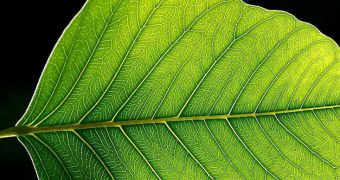Cities depend on their street lights for safety and navigation, but oftentimes installing lamp posts requires trees to be cut down to make room. That may no longer be necessary, thanks to a new type of nanoparticle, that turns leafs into light sources.
The team behind a new study says that it was able to create a new type of gold particle at the nanoscale, that is capable to changing leafs into bio-light-emitting diodes. The group is based in Taiwan.
Traditionally, city authorities use a variety of light globes to illuminate the streets, but these sources are not very efficient, and consume a lot of electricity.
Replacing them with light-emitting diodes (LED) would diminish the amount of electricity needed, but the Taiwan team wanted to take this a step further.
Instead of using light poles with LED installed, they sought to make the trees themselves grow. In fact, they created a bio-luminescent plant. They used Bacopa carolinian for their investigation.
The team is based at the Academia Sinica in Taipei, and was led by expert Yen Hsun Su. The group says that B. carolinian is a plant generally used in aquariums.
It is a perennial aquatic or semi-aquatic herb, which changes the color of its leafs depending on how much sunlight falls on them. Colors vary from bronze to red, PhysOrg reports.
The luminescence occurs because the gold nanoparticles that are introduced in the planet are made to release red light at wavelengths lower than the ones that cause chlorophyll to do the same.
Chlorophyll is the pigment in the leafs that gives them the green color they are famous for. It plays an important role in processing sunlight reaching the plant, and turning carbon dioxide into oxygen.
The team dubbed its new particle nano-sea-urchins (NSU), due to their peculiar shape. The NSU suppress emission blinking, which experts say is a problem that is relatively common with gold nanoparticles.
By adding the new structures to the leafs of B. carolinian, Su and his group were able to make chlorophyll emit red light.
The group says that this could be used to make luminescent trees, that would line the side of the road at night. The main advantage to this would be that the herb could be planted anywhere.
Additionally, the plant does not need any source of energy to operate, as it derives its energy from the soil and the Sun. The group is now working on improving the performances of its system.
Details of the team's accomplishments appear in the latest issue of the esteemed scientific journal Nanoscale.

 14 DAY TRIAL //
14 DAY TRIAL //